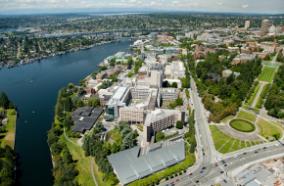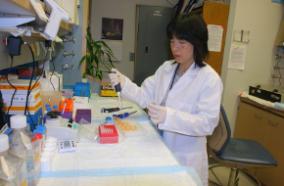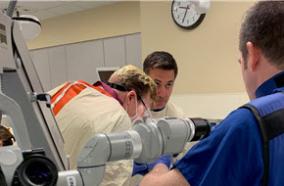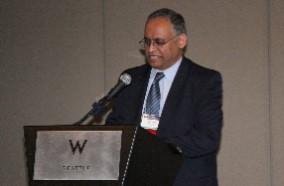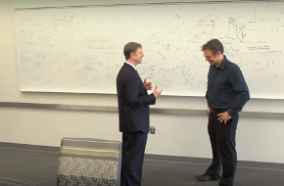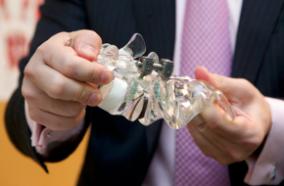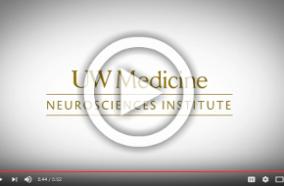UW Neurological Surgery Recent PubMed Publications
Neuroanatomy of cranial dural vessels: implications for subdural hematoma embolization
Onyx embolization for dural arteriovenous fistulas: a multi-institutional study
Activation of the cardiac non-neuronal cholinergic system prevents the development of diabetes-associated cardiovascular complications
Checkpoint inhibition through small molecule-induced internalization of programmed death-ligand 1
Systematic Review of Preinjury Mental Health Problems as a Vulnerability Factor for Worse Outcome After Sport-Related Concussion
Radiogenomic modeling predicts survival-associated prognostic groups in glioblastoma
Effects of Permethrin or Deltamethrin Exposure in Adult Sprague Dawley Rats on Acoustic and Light Prepulse Inhibition of Acoustic or Tactile Startle
Is a picture-perfect thrombectomy necessary in acute ischemic stroke?
Upper extremity transvenous access for neuroendovascular procedures: an international multicenter case series
Differences in rapid increases in county-level COVID-19 incidence by implementation of statewide closures and mask mandates - United States, June 1-September 30, 2020
The Rare Occurrence of Reoperation After Cervical Laminoplasty: A 14-Year Retrospective Review of Reoperative Rates at a Single Institution
The Transitions Clinic Network: Post Incarceration Addiction Treatment, Healthcare, and Social Support (TCN-PATHS): A hybrid type-1 effectiveness trial of enhanced primary care to improve opioid use disorder treatment outcomes following release from jail
Projected Estimates of Opioid Mortality After Community-Level Interventions
Sudden Unexpected Postnatal Collapse Resulting in Newborn Death in the United States
Observation Versus Intervention for Low-Grade Intracranial Dural Arteriovenous Fistulas
Commentary: Prognostic Factors Associated With Surviving Less Than 3 Months vs Greater Than 3 Years Specific to Spine Stereotactic Body Radiotherapy and Late Adverse Events
Common Data Elements for COVID-19 Neuroimaging: A GCS-NeuroCOVID Proposal
Dural augmentation approaches and complication rates after posterior fossa decompression for Chiari I malformation and syringomyelia: a Park-Reeves Syringomyelia Research Consortium study
Identification of novel targets of azithromycin activity against Pseudomonas aeruginosa grown in physiologically relevant media.
Identification of novel targets of azithromycin activity against Pseudomonas aeruginosa grown in physiologically relevant media.
Proc Natl Acad Sci U S A. 2020 12 29;117(52):33519-33529
Authors: Belanger CR, Lee AH, Pletzer D, Dhillon BK, Falsafi R, Hancock REW
Abstract
Pseudomonas aeruginosa causes severe multidrug-resistant infections that often lead to bacteremia and sepsis. Physiologically relevant conditions can increase the susceptibility of pathogens to antibiotics, such as azithromycin (AZM). When compared to minimal-inhibitory concentrations (MICs) in laboratory media, AZM had a 16-fold lower MIC in tissue culture medium with 5% Mueller Hinton broth (MHB) and a 64-fold lower MIC in this tissue culture medium with 20% human serum. AZM also demonstrated increased synergy in combination with synthetic host-defense peptides DJK-5 and IDR-1018 under host-like conditions and in a murine abscess model. To mechanistically study the altered effects of AZM under physiologically relevant conditions, global transcriptional analysis was performed on P. aeruginosa with and without effective concentrations of AZM. This revealed that the arn operon, mediating arabinosaminylation of lipopolysaccharides and related regulatory systems, was down-regulated in host-like media when compared to MHB. Inactivation of genes within the arn operon led to increased susceptibility of P. aeruginosa to AZM and great increases in synergy between AZM and other antimicrobial agents, indicating that dysregulation of the arn operon might explain increased AZM uptake and synergy in host-like media. Furthermore, genes involved in central and energy metabolism and ribosome biogenesis were dysregulated more in physiologically relevant conditions treated with AZM, likely due to general changes in cell physiology as a result of the increased effectiveness of AZM in these conditions. These data suggest that, in addition to the arn operon, there are multiple factors in host-like environments that are responsible for observed changes in susceptibility.
PMID: 33318204 [PubMed - indexed for MEDLINE]


